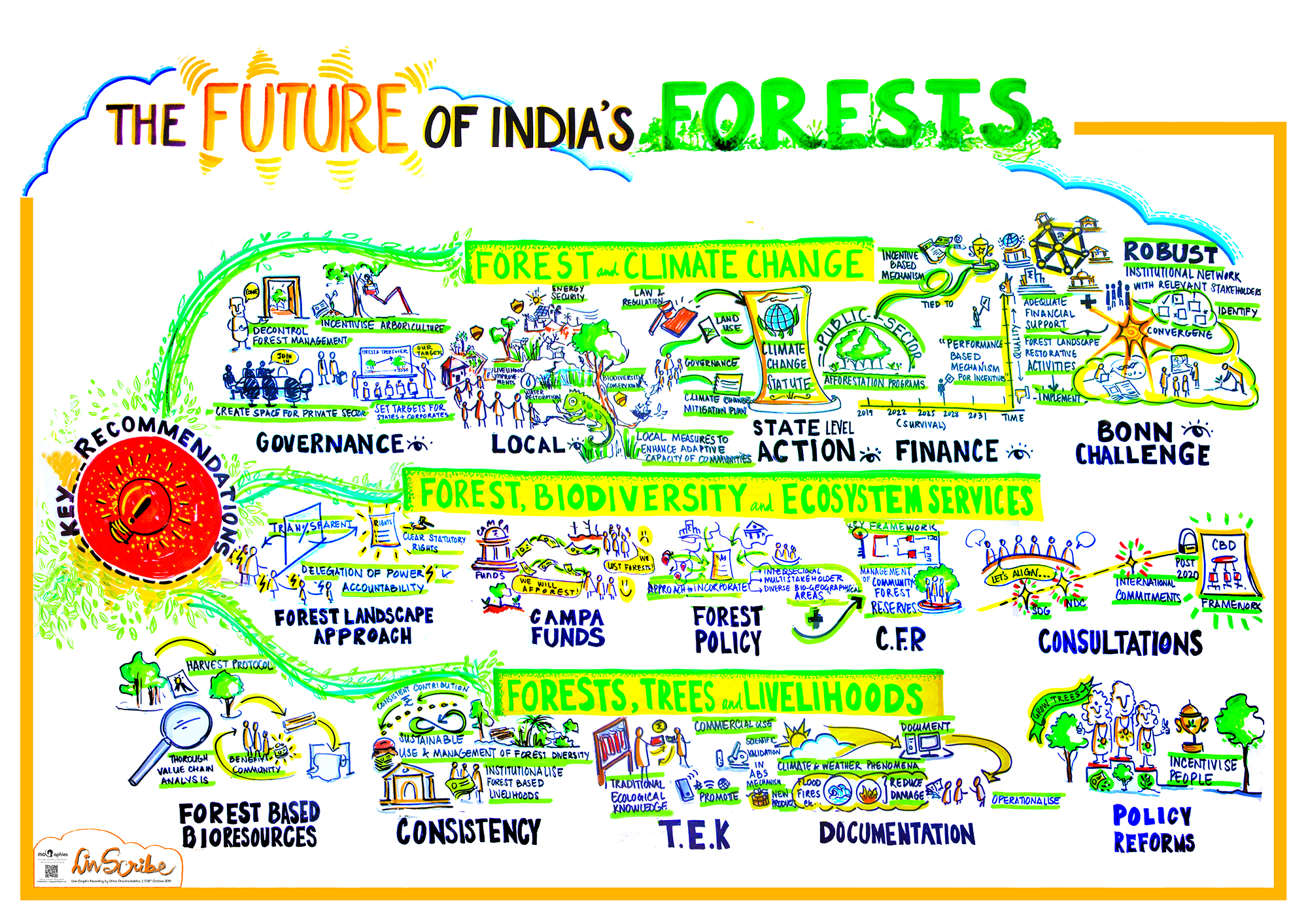28 Oct, 2019
Why forests?
In “Forests Futures” (FAO, 2019) three scenarios are drawn for 2030 and 2050. In the “business as usual” scenario, the achievement of global targets, like Global Forest Goals, SDGs, Bonn Challenge and Paris Agreement on climate change, will be suboptimal. The “disruptive” scenario shows the future, if forest degradation and ecosystem deterioration accelerates, with major negative ramifications on food and water production, human well-being and overall ecological stability. To reach the “aspirational” scenario, a transformational change in forest and landscape management is required to achieve the global targets.
.jpg)
Transferring these scenarios to the Indian context triggers questions like: If and how India will achieve an aspirational future of its forests? How can India’s national policies and schemes in the forest sector be strategically planned to achieve India’s international commitments, while also considering the changing national and local demand and need? Which roadblocks are on the pathway to initiate a transformative change? Do encouraging examples already exist? Which actions are required now?
Finding answers to these questions was the focus of the forest conference which served as a cross-learning platform for the forestry and allied sectors to identify realistic solutions to meet international, national and local commitments and needs.
The Forest Conference
2030 is a critical benchmark year for India in achieving its international commitments and national targets of creating an additional carbon sink of 2.5 to 3 billion tonnes of CO2 equivalent and an increased forest cover by 9%. While India has been able to maintain its forest and tree cover to 24% of its geographical area, 10 years from now, increasing societal and national demands of forest products and services propelled by rapid economic development, population growth and industrialisation will increase the pressure on its forests.
Zooming in and out between different levels of forest management GIZ India’s Green Cluster conference on ‘The Future of India’s Forests’ at New Delhi provided a platform to discuss emerging scenarios facing the forestry sector in India from 17-18 Oct 2019. “We have a direct and shared responsibility to protect the world's forests. We must take action today to ensure that future generations also can benefit from this unique treasure”, said Mr. Dirk Steffes-Enn - Deputy Head, Economic Cooperation and Development; Embassy of the Federal Republic of Germany speaking at the conference. In the keynote speech Mr. Siddantha Das – Director General and Special Secretary, Ministry of Environment, Forest and Climate Change said that, “the three objectives of forest management in India today are the conservation of resources, protecting the forest as a carbon sink and ensuring the livelihoods of the people.”
.jpg)
The conference offered an interdisciplinary and cross-learning platform to various national and international partners, technical experts, practitioners and decision-makers to find realistic and workable solutions to initiate a transformative change in managing forests across sectors, scales and trade-offs.
The sessions covered three thematic areas: Forest and Climate Change, Forest Biodiversity and Ecosystem Services, and Forest, Trees and Livelihoods. They featured panel discussions, keynote speeches and lightening talks by experts from government, civil society, and academic institutions as well as national and international partners to gain from their vast and varied expertise and their engagements on all three levels: local, national and international. The event also witnessed the use of digital tools by the participants to collect and vote on relevant questions from the audience for the panellists. The top five recommendations from each session are listed below.
Recommendations
.jpeg)
.jpeg)
.jpg)
These recommendations were welcomed by representatives from government and development cooperation expressing their willingness to integrate them into on-going discussions and put further efforts into their implementation.

We would like to hear from you. Write to us by clicking on the feedback button on top.
© 2014 IGBP. All Rights Reserved.
Site By: Virtualpages
